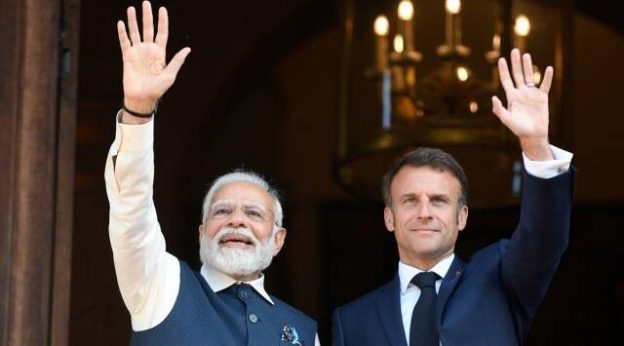Delhi’s timing and approach will build on these partnerships to engage and lead the strategic journey of technological advancements
Prime Minister Narendra Modi’s recent historic visits to the US and France in three weeks have focused on strengthening strategic and economic cooperation in the technology sector. These visits have taken place amidst global political and economic instability, particularly due to the Ukraine war and concerns surrounding China’s rise. On tech, India’s strengths and resources, conduct in dealing with management and transfers and the emerging geopolitics around the sector have given the much-needed thrust for the hesitant US bureaucracy as well the collaborative French establishment. They have proceeded to levels of cooperation that would define many aspects of tech usage, management and proliferation in the next few years up to 2047 when both these bilaterals attain a century-old relationship. The engagements during these visits have emphasised the importance of technology in global geopolitical alignments along with emerging economic opportunities.
The homework on the ground before both these visits has been focussed. A whole-of-government approach involving the industry and academia allowed India to engage more optimally to cover its existing tech gaps and lead the course for future partnerships. India’s emerging tech diplomacy was on full display in the deliberations as tech is becoming an important area of global geopolitical alignments besides the emerging economic opportunities. Two areas that stood out in these bilateral engagements have been defence technology and the various avenues of the digital technology landscape.
In the defence technology sector, the partnerships have expanded, with a focus on military aviation and naval capabilities. In the US, an MoU was signed between General Electric and Hindustan Aeronautics Limited (HAL) for the manufacture of GE F-414 jet engines in India for the Light Combat Aircraft Mk 2, under transfer of technology (TOT). Additionally, India procured 31 MQ-9B HALE UAVs from General Atomics. In France, Safran and DRDO agreed to jointly develop a military jet engine in India for the Advanced Medium Combat Aircraft (AMCA), and Safran also agreed to co-develop the engine for the Indian Multi-Role Helicopter (IMRH) with HAL. Aircraft engine technology has been a major requirement for India for quite some time and while the US provided only TOT, the French provided India with the intellectual property (IP) rights for the new military jet engine.
Digital technology has been another key focus area. Discussions and agreements revolved around cyber security, artificial intelligence (AI), quantum computing (QC), semiconductors, and high-performance computing (HPC). The Indo-US iCET initiative, inaugurated earlier in the year by both the national security advisers, formed the basis for discussions, while an MoU on cooperation in digital technologies was signed between the Ministry of Electronics and Information Technology (MeitY) and the French Ministry of Economy based on the Indo-French roadmap on Cyber Security and Digital Technology adopted in 2019. The agreements aim to foster cooperation in building semiconductor capabilities in India as envisaged under the National Semiconductor Mission (NSM), developing AI and QC systems, and establishing standards for global cooperation. India’s current leadership of the 25-nation Global Partnership for AI (GPAI) was appreciated by both the US and French and they offered their support for India taking a role in fostering responsible AI in the face of growing concerns around the existential threats posed by it. The establishment of a joint Indo-US Quantum Coordination Mechanism to facilitate collaboration among industry, academia, and government is a very important step.
Cybersecurity cooperation, critical infrastructure protection, and promoting cybersecurity education and skills also form a major part of the cooperation expanding on the current engagement of capacity building. India’s focus on Digital Public Infrastructure (DPI) and its possibility to reduce the global digital divide is another avenue that both US and France have agreed to support.
It is also pertinent to note that defence technology and many facets of strategic digital technology have been at the centre of convergence and their force multiplier effect is concerning. In the last couple of decades, defence capabilities have been transforming with the fusion of digital technologies in equipment hitherto run on electromagnetic and kinetic strengths. AI and QC have become force enablers for equipment and systems while cyber attacks and surveillance pursuits using such technology are becoming more prevalent.
The timing and the approach are right for India to build on these partnerships to engage and lead in the strategic journey of technological advancements in the coming years. For that, more capacity on the ground will be a better enabler.
https://indianexpress.com/article/opinion/columns/jet-engines-ai-quantum-computing-seeds-future-tech-diplomacy-france-united-states-8843982/





